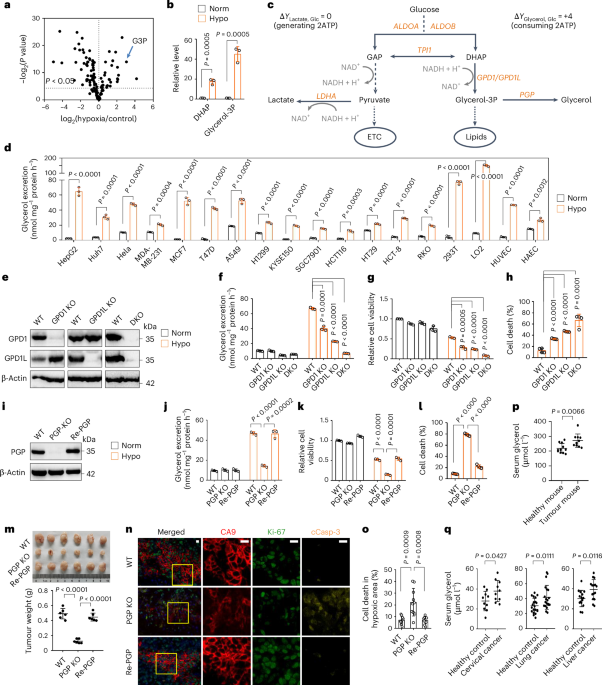- Select a language for the TTS:
- UK English Female
- UK English Male
- US English Female
- US English Male
- Australian Female
- Australian Male
- Language selected: (auto detect) - EN
Play all audios:
ABSTRACT The rhizomelic form of chondrodysplasia punctata (RCDP) is an autosomal recessive disease of peroxisome biogenesis characterized by deficiencies in several peroxisomal proteins,
including the peroxisomal enzymes of plasmalogen biosynthesis and peroxisomal 3-ketoacyl thiolase1. In cultured fibroblasts from patients with this disorder, both the peroxisomal targeting
and proteolytic removal of the amino-terminal type 2 peroxisomal targeting sequence (PTS2) of thiolase are defective, whereas the biogenesis of proteins targeted by car boxy-terminal type 1
peroxisomal targeting sequences (PTS1) is unimpaired. We have previously isolated a _Saccharomyces cerevisiae_ peroxisomal biogenesis mutant, _pex7_ (formerly _peb1/pas7_)2, which
demonstrates a striking similarity to the cellular phenotype of RCDP fibroblasts in that PTS1 targeting is functional, but the peroxisomal packaging of PTS2 targeted thiolase is lacking.
Complementation of this mutant has led to the identification of the protein ScPex7p3,4, a PTS2 receptor5,6. In this paper we report cloning of the human orthologue of Sc_PEX7_, and
demonstrate that this is the defective gene in RCDP. We show that expression of human PEX7 in RCDP cells rescues PTS2 targeting and restores some activity of dihydroxyacetone phosphate
acyltransferase (DHAP-AT), a peroxisomal enzyme of plasmalogen biosynthesis, and we identify the mutations responsible for loss of function of PEX7 in a compound heterozygote RCDP patient.
These results imply that several peroxisomal proteins are targeted by PTS2 signals and that the various biochemical and clinical defects in RCDP result from a defect in the receptor for this
class of PTS. Access through your institution Buy or subscribe This is a preview of subscription content, access via your institution ACCESS OPTIONS Access through your institution
Subscribe to this journal Receive 12 print issues and online access $209.00 per year only $17.42 per issue Learn more Buy this article * Purchase on SpringerLink * Instant access to full
article PDF Buy now Prices may be subject to local taxes which are calculated during checkout ADDITIONAL ACCESS OPTIONS: * Log in * Learn about institutional subscriptions * Read our FAQs *
Contact customer support SIMILAR CONTENT BEING VIEWED BY OTHERS SPECIFIC HETEROZYGOUS VARIANTS IN _MGP_ LEAD TO ENDOPLASMIC RETICULUM STRESS AND CAUSE SPONDYLOEPIPHYSEAL DYSPLASIA Article
Open access 03 November 2023 CORRECTION OF A KNOCK-IN MOUSE MODEL OF ACRODYSOSTOSIS WITH GENE THERAPY USING A RAAV9-CAG-HUMAN PRKAR1A VECTOR Article 01 October 2021 CRISPR-MEDIATED
GENERATION AND CHARACTERIZATION OF A _GAA_ HOMOZYGOUS C.1935C>A (P.D645E) POMPE DISEASE KNOCK-IN MOUSE MODEL RECAPITULATING HUMAN INFANTILE ONSET-POMPE DISEASE Article Open access 14
December 2022 REFERENCES * Lazarow, P.B. & Moser, H.W. in _The Metabolic and Molecular Basis of Inherited Disease Vol. 7 _(eds Scriver, C.R., Beaudet, A.L., Sly, W.S. & Valle, D.),
2287–2324 (McGraw-Hill, New York, 1995). Google Scholar * Zhang, J.W., Man, Y. & Lazarow, P.B. Novel peroxisome clustering mutants and peroxisome biogenesis mutants of _Saccharomyces
cerevisiae_. _J. Cell Biol._ 123, 1133–1147 (1993). Article PubMed CAS Google Scholar * Zhang, J.W. & Lazarow, P.B. PEB1 (_PAST_) in _Saccharomyces cerevisiae_ encodes a hydrophilic,
intraperoxisomal protein which is a member of the WD repeat family and is essential for the import of thiolase into peroxisomes. _J. Cell Biol._ 129, 65–80 (1995). Article PubMed CAS
Google Scholar * Marzioch, M., Erdmann, R., Veenhuis, M. & Kunau, W.-H. _PAS7_ encodes a novel yeast member of the WD-40 protein family essential for import of 3-oxoacyl-CoA thiolase, a
PTS2-containing protein, into peroxisomes. _EMBO J._ 13, 4908–4917 (1994). Article PubMed PubMed Central CAS Google Scholar * Zhang, J.W. & Lazarow, P.B. Peb1 p (Pas7p) Is an
Intraperoxisomal Receptor for the NH2-terminal, Type 2, Peroxisomal Targeting Sequence of Thiolase: Peblp Itself Is Targeted to Peroxisomes by an NH2-terminal Peptide. _J. Cell Biol._ 132,
325–334 (1996). Article PubMed CAS Google Scholar * Rehling, P. _et al_. The import receptor for the peroxisomal targeting signal 2 (PTS2) in _Saccharomyces cerevisiae_ is encoded by the
_PAS7_ gene. _EMBO J._ 15, 2901–2913 (1996). Article PubMed PubMed Central CAS Google Scholar * Boguski, M.S., Tolstoshev, C.M. & Bassett, D.E. Gene discovery in dbEST [letter].
_Science_ 265, 1993–1994 (1994). Article PubMed CAS Google Scholar * Bassett Jr, D.E. _et al_. Comparative genomics, genome cross-referencing and XREFdb. _Trends Genet._ 11, 372–373
(1995). Article PubMed CAS Google Scholar * Miki, T. _et al_. Development of a highly efficient expression cDNA cloning system: Application to oncogene isolation. _Proc. Natl. Acad. Sci.
USA_ 88, 5167–5171 (1991). Article PubMed CAS Google Scholar * Kozak, M. An analysis of vertebrate mRNA sequences: Intimations of translational control. _J Cell Biol._ 115, 887–903
(1991). Article PubMed CAS Google Scholar * Swinkels, B.W., Gould, S.J., Bodnar, A.G., Rachubinski, R.A. & Subramani, S. A novel, cleavable peroxisomal targeting signal at the
amino-terminus of the rat 3-ketoacyl-CoA thiolase. _EMBO J._ 10, 3255–3262 (1991). Article PubMed PubMed Central CAS Google Scholar * Osumi, T. _et al_. Amino-terminal presequence of
the precursor of peroxisomal 3-ketoacyl-CoA thiolase is a cleavable signal peptide for peroxisomal targeting. _Biochem. Biophys. Res. Commun._ 181, 947–954 (1991). Article PubMed CAS
Google Scholar * Motley, A., Hettema, E., Distel, B. & Tabak, H. Differential protein import deficiencies in human peroxisome assembly disorders. _J. Cell Biol._ 125, 755–767 (1994).
Article PubMed CAS Google Scholar * Purdue, P.E. & Lazarow, P.B. Targeting of human catalase to peroxisomes is dependent upon a novel COOH-terminal peroxisomal targeting sequence.
_J. Cell Biol._ 134, 849–862 (1996). Article PubMed CAS Google Scholar * Singh, I., Lazo, O., Contreras, M., Stanley, W. & Hashimoto, T. Rhizomelic chondrodysplasia punctata:
biochemical studies of peroxisomes isolated from cultured skin fibroblasts. _Arch Biochem. Biophys._ 286, 277–283 (1991). Article PubMed CAS Google Scholar * Balfe, A., Hoefler, G.,
Chen, W.W. & Watkins, P.A. Aberrant subcellular localization of peroxisomal 3-ketoacyl-CoA thiolase in the Zellweger syndrome and rhizomelic chondrodysplasia punctata. _Pediatr. Res._
27, 304–310 (1990). Article PubMed CAS Google Scholar * Slawecki, W.L. _et al_. Identification of three distinct peroxisomal protein import defects in patients with peroxisome biogenesis
disorders. _J. Cell Sci._ 108, 1817–1829 (1995). PubMed CAS Google Scholar * Heymans, H.S., Oorthuys, J.W., Nelck, G., Wanders, R.J. & Schutgens, R.B. Rhizomelic chondrodysplasia
punctata: another peroxisomal disorder [letter]. _N. Engl. J. Med._ 313, 187–188 (1985). PubMed CAS Google Scholar * Lazarow, P.B. Peroxisome structrue, function, and biogenesis. Human
patients and yeast mutants show strikingly similar defects in peroxisome biogenesis. _J. Neuropathol. Exp. Neurol._ 54, 720–725 (1995). Article PubMed CAS Google Scholar * Purdue, P.E.,
Takada, Y. & Danpure, C.J. Identification of mutations associated with peroxisome-to-mitochondrion mistargeting of alanine/glyoxylate amino-transferase in primary hyperoxaluria type 1.
_J Cell Biol._ 111, 2341–2351 (1990). Article PubMed CAS Google Scholar * Purdue, P.E., Lumb, M.J. & Danpure, C.J. Molecular evolution of alanine/glyoxylate aminotransferase 1
intracellular targeting. Analysis of the rabbit and marmoset genes. _Eur. J. Biochem._ 207, 757–766 (1992). Article PubMed CAS Google Scholar * Ausubel, P.M. _et al_. _Current protocols
in Molecular Biology_ (John Wiley and Sons, New York, New York, 1987). Google Scholar * Schutgens, R.B.H. _et al_. Deficiency of acyl-CoA:dihydroxyacetone phosphate acyltransferase in
patients with Zellweger (cerebro-hepato-renal) syndrome. _Biochem. Biophys. Res. Commun._ 120, 179–184 (1984). Article PubMed CAS Google Scholar * Schutgens, R.B.H. _et al_.
Acyl-CoA:dihydroxyacetone phosphate acyltransferase in human skin fibroblasts: study of its properties using a new assay method. _Biochim. Biophys. Acta._ 879, 286–291 (1986). Article
PubMed CAS Google Scholar * Webber, K.O. & Hajra, A.K. Dihydroxyacetone phosphate acyltransferase. _Meth. Enzymol._ 209, 92–98 (1992). Article PubMed CAS Google Scholar * Poole,
B. The kinetics of disappearance of labeled leucine from the free leucine pool of rat liver and its effect on the apparent turnover of catalase and other hepatic proteins. _J Biol. Chem._
246, 6587–6591 (1971). PubMed CAS Google Scholar * Price, V.E., Sterling, W.R., Tarantola, V.A., Hartley, R.W. Jr., & Rechcigl, M. Jr., The kinetics of catalase synthesis and
destruction in vivo. _J. Biol. Chem._ 237, 3468–3475 (1962). PubMed CAS Google Scholar Download references AUTHOR INFORMATION Author notes * P. Edward Purdue and Jing Wei Zhang: P.E.R
& J.W.Z. both made major contributions to this work. AUTHORS AND AFFILIATIONS * Department of Cell Biology and Anatomy, Mount Sinai School of Medicine, 1190 Fifth Avenue - , Box 1007,
New York, NY, 10029-6574 Marek Skoneczny & Paul B. Lazarow Authors * P. Edward Purdue View author publications You can also search for this author inPubMed Google Scholar * Jing Wei
Zhang View author publications You can also search for this author inPubMed Google Scholar * Marek Skoneczny View author publications You can also search for this author inPubMed Google
Scholar * Paul B. Lazarow View author publications You can also search for this author inPubMed Google Scholar CORRESPONDING AUTHOR Correspondence to Paul B. Lazarow. RIGHTS AND PERMISSIONS
Reprints and permissions ABOUT THIS ARTICLE CITE THIS ARTICLE Purdue, P., Zhang, J., Skoneczny, M. _et al._ Rhizomelic chondrodysplasia punctata is caused by deficiency of human PEX7, a
homologue of the yeast PTS2 receptor. _Nat Genet_ 15, 381–384 (1997). https://doi.org/10.1038/ng0497-381 Download citation * Received: 30 December 1996 * Accepted: 05 February 1997 * Issue
Date: 01 April 1997 * DOI: https://doi.org/10.1038/ng0497-381 SHARE THIS ARTICLE Anyone you share the following link with will be able to read this content: Get shareable link Sorry, a
shareable link is not currently available for this article. Copy to clipboard Provided by the Springer Nature SharedIt content-sharing initiative







